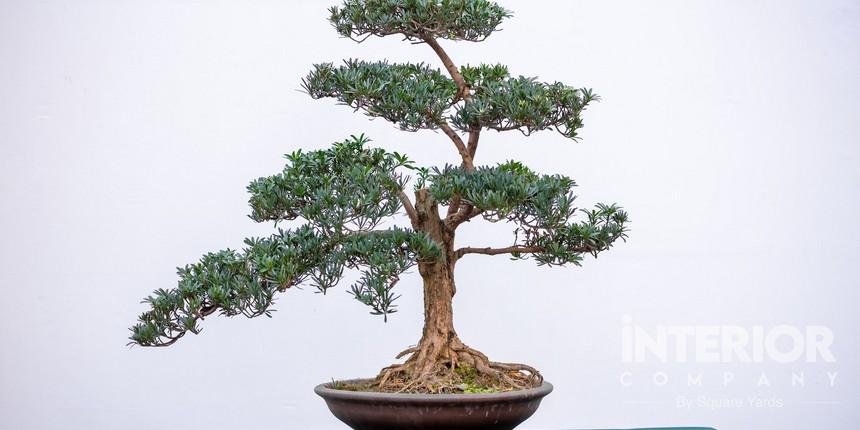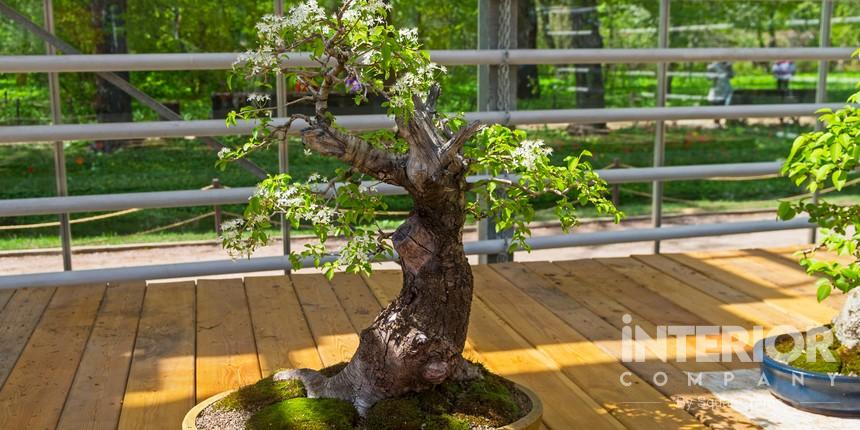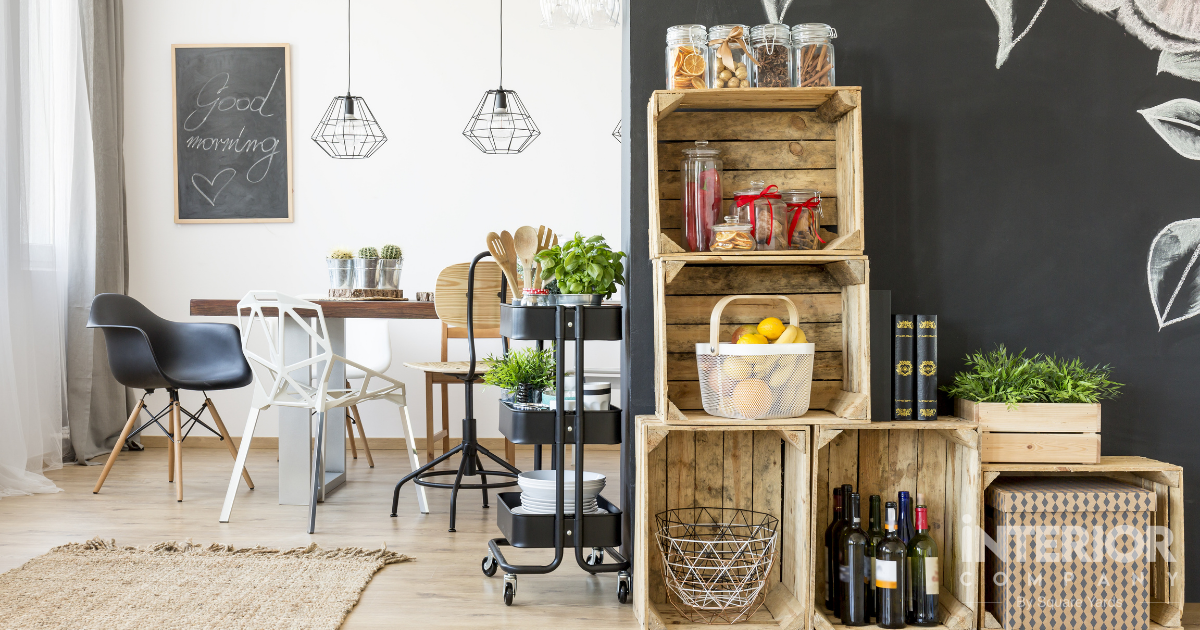- Kitchens
- Design Ideas
- Cities
- Trends
- Guides
- Price Calculators
- Our PortfolioNEW
- More
- Home
- Trends
- Furniture And Decor
- Indoor Plants
- Bonsai Tree Indp
Are You a Beginner? Here’s How You Can Grow Your Own Bonsai Tree at Home!
Planning to grow your own Bonsai tree at home but clueless on how to get started? Don’t’ fret! Growing a Bonsai tree can be great fun and with these pro tips and tricks, you can become a Bonsai tree gardener in no time!
Do you know the concept of growing and cultivating Bonsai tree originated from China and it was later practiced by Japan? The word ‘’Bonsai’’ means ‘’Tree In A Pot’’ that were seen as a status symbol among the elite class. However, the trend of cultivating this miniature tree plant at home is now increasingly becoming popular worldwide specially in India.
Table of Content
How to Grow a Bonsai Tree?
This ancient technique of cultivating Bonsai tree at home is not rocket science as it looks. Indoor Bonsai plants are cultivated in warm weather that require constant watering and maintenance. With these easy steps, you can be the proud owner of a Bonsai plant.
Step 1: Select the Right Bonsai Tree
The foremost step before you move ahead with the cultivating process is selecting the right Bonsai tree that will stay long. Woody trees or shrub species are the best suited plants for making Bonsai. However, there are other factors to consider like the climatic condition and whether you are choosing the plant for indoors or outdoors.
Step 2: Preparing the Root Ball
Once you have selected the plant, remove it from the nursery, cut off the bottom two root ball of the plant. After cutting and reshaping the root ball moisten them using a spray bottle before placing it inside the pot.
How can I Choose the Right Pot for the Bonsai Plant?
When choosing a pot for Bonsai plant always select the one that has effective drainage and airing. You can also choose pots that are made with Bonsai friendly clay mixture.
Step 3: Placing the Plant In The Pot
Cut off the unwanted branches and roots that may poke out from the bottom of the pot. Once you are done with the trimming of the root ball place it inside the pot by topping it with gravels and mosses.
Step 4: Shaping the Tree
After successfully positioning the plant in the pot carefully observe and decide which branch will be more beneficial in shaping the tree. You can reshape the branches by wrapping wires around to give it a desired shape that you may have pictured in your mind. But avoid wrapping wires tightly as it may easily break the branches. Once you have achieved the desired shape you can remove the wire.
How to Take Care of Bonsai Tree?
This stunning miniature tree is more delicate unlike other indoor plants that need constant care and maintenance. By following basic rules, you too can look after your Bonsai plant.
- Watering: When it comes to looking after your Bonsai plant one of the most challenging task is determining when and how much you should water your plant. In fact, one of the reasons for death of Bonsai plants is under watering. Since these plants have a shallow soil layer, they tend to easily dry. If you think the top layer of the soil is dry it is always advisable to add some water. This will moisten the roots of the plant and prevent it from drying out.
- Moreover, overwatering of the plant can be equally harmful for your Bonsai. When roots are drowning in water, they are deprived of oxygen that can result in yellowing of the leaves.
- Lighting: Bonsai plants need five to six hours of direct sunlight for speedy growth. If your plant is positioned in a dry and dingy spot you need to relocate your plant in a place that receives good amount of sunlight. Since the humidity and temperature is always changing, you must also change the location of your plant to keep a balance between the light, humidity, and temperature.
- Soil Mixture: Soil is equally important for your plant as it provides the essential nutrients to your tree. Akadama, Pumice, Lava rock, organic potting compost, and fine gravel are the commonly used components of Bonsai soil. However, different tree species demand different soil mixture. For using the right soil mixture for your plant seek an expert advice and try experimenting with the one that suits your plant.
- Repotting: For faster and long-term growth of your Bonsai plant it is essential to repot it from time to time. The most ideal time to transfer your plant from one pot to another is after winter season. Ideally a Bonsai plant must be rooted once a year however it also depends on the soil mixture you are using for your plant.
- Prunning: Do you know Bonsai tree requires regular Pruning as it helps in maintaining its desired shape. There are small weeds that can easily grow on the upper soil surface of your Bonsai plant, make sure you remove any unwanted layer on the soil. Moreover, the pruning of the leaves should ideally be done during summers or spring as it makes it easy for the trees to recover and grow new leaves again.
Types Of Bonsai Tree?
A perennial, woody-stemmed tree can used for Bonsai tree. Here are some of the trees that can be grown as Bonsai trees:
Pine Trees

These trees are commonly used for Bonsai as they can be easily trimmed and styled because of their hard structure. Pinus Thunbergii, P. Mugo, P. Sylvestris and P. Parviflora are some of the pine species that are good for Bonsai.
Japanese Maple

These are deciduous trees that are popularly known for their red burgundy color that tend to change their color to yellow or red in fall. Unlike other Bonsai species Japanese Maple require constant watering when they are growing. These trees tend to change their color from one season to another.
Japanese Flowering Cherry

Theses trees are popular in Japan because of their striking color and appearance. With the right technique and maintenance, you can easily create Bonsai cherry trees out of these gorgeous trees. Traditionally they signify friendship that can be easily trimmed because of their flexible branches.
Cedar

These evergreen rough and tough trees grow short needle clusters along with their branches. However, for beginners these trees are not the ideal option as they demand rigorous care and maintenance. Lebanon, Cyprus Cedar, Himalayan Cedar and Atlas Cedar are some of the common Cedar specifies that are best suited for cultivating Bonsai tree.
What are the Benefits of Having Bonsai Tree At Home?
Over the years people have now realised the significance of having a Bonsai plant at home. Bonsai plants have multiple health benefits that makes them the ideal indoor houseplant.
Here are some of the perks of having a Bonsai plant at home:
- Air Purifier: Touted as natural air purifier these plants help in removing the indoor air pollutants, thus making your place more breathable.
- Relieves Stress: Bonsai plants play a significant role in relieving the stress levels and helps in reducing the blood pressure. This plant is best suited for those who suffer from anxiety and depression as it helps in combating depression and increases your overall productivity.
- Enhances physical and mental health: To live a healthy life your physical and mental health are equally important. One of the perks of cultivating a Bonsai plant at home is it keeps your mind and body engaged. Moreover, it also develops your thinking ability, retaining power and keeps your mind more focused.
- Keeps you rejuvenated: Bonsai plants have great power to keep you refreshed and rejuvenated throughout the day. A refreshed body and mind help in improving your overall physical and mental health.
How to Make Bonsai Soil at Home?
For long term growth of your plant a different technique and ingredient is require for the Bonsai plant. The mixture involves a combination of pumice, lava rock and Akadama with appropriate proportions.
Here's how you can prepare the perfect soil mixture at home using the simple soil ingredients for cultivating your Bonsai plant:
Bonsai soil involves mixture of organic and inorganic components
- Organic Components: Organic components such as Peat Moss, Berk Of Conifer tress and some other commonly used components of soil can be used for preparing the soil mixture for Bonsai plant.
- Inorganic Components: Inorganic substances have high drainage capability that makes them an essential component for preparing the soil for Bonsai plant.
- Moss: Moss is the perfect example of inorganic substance as it helps in holding the organic components together. However, due to its high retention capacity, Moss can damage your plant. While preparing the mixture remember to use appropriate amount of Moss.
- Akadama: This clay like substance is the most widely used component which is hard baked until it becomes rock solid. Before mixing Akadama it is advisable to remove the small granules as Bonsai soil requires only large granules. However, repotting is also advisable as Akadama can break down into smaller pieces after years of use.
- Pumice: Do you know this volcanic component has great water retention capacity? Highly porous in nature this component can hold large quantities of water. It's draining properties helps in holding the components together.
- Lava Rock: Lava Rock has the properties of Akadama and Pumice. It is not only highly porous in nature but has a good water retention property and can also drain the water easily.
- River Sand: These small stones that were earlier used for drainage and aeration purposes have little water retention properties and can be used for preparing soil mixture.
Procedure For Soil Mixing
Conifers use 1:1:1 ratio while deciduous trees use 1:2:1 ratio for mixing. With these easy steps you too can prepare the perfect soil mixture for your Bonsai plant.
STEP-1
First prepare Akadama as they are easy to screen
STEP-2
The next step involves draining other components like Pumice, River Sand with the help of a strainer to remove unwanted particles. This will help in removing the unwanted small particles in the soil.
STEP-3
The next step involves taking Lava Rock which should be carefully screened as it is dusty.
STEP-4
Once you are done with the screening you can mix all the particles together in the right ratio. However, it is always recommended to add Pumice to Akadama and then to Lava Rock. Last but not the least add organic component to the soil if your Bonsai requires more water retention.
Ready for a home transformation?
Let our designers assist you!
Recent Posts
Related Category
- Balcony
- Bedroom
- Home Decor
- Living Room
- Outdoors



































